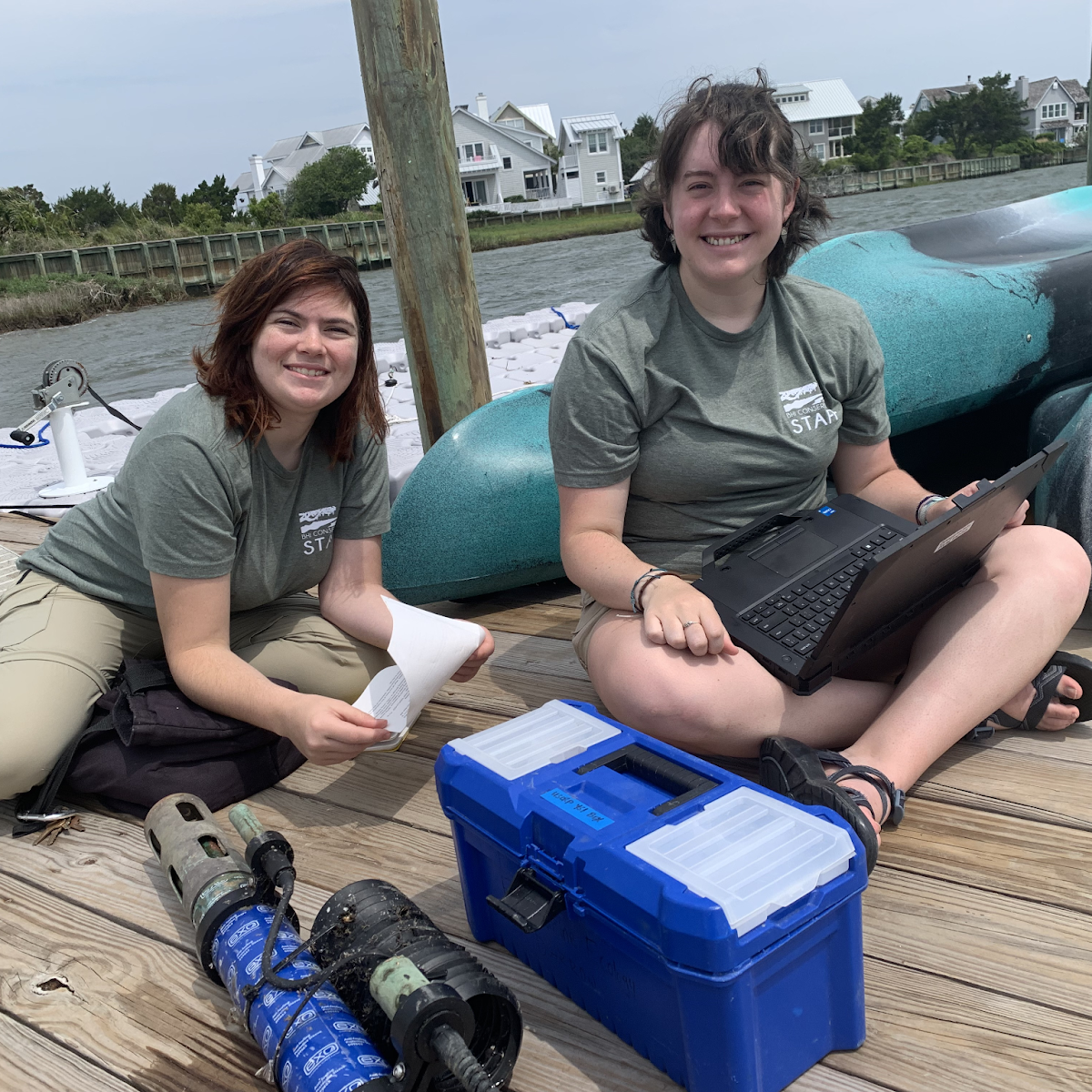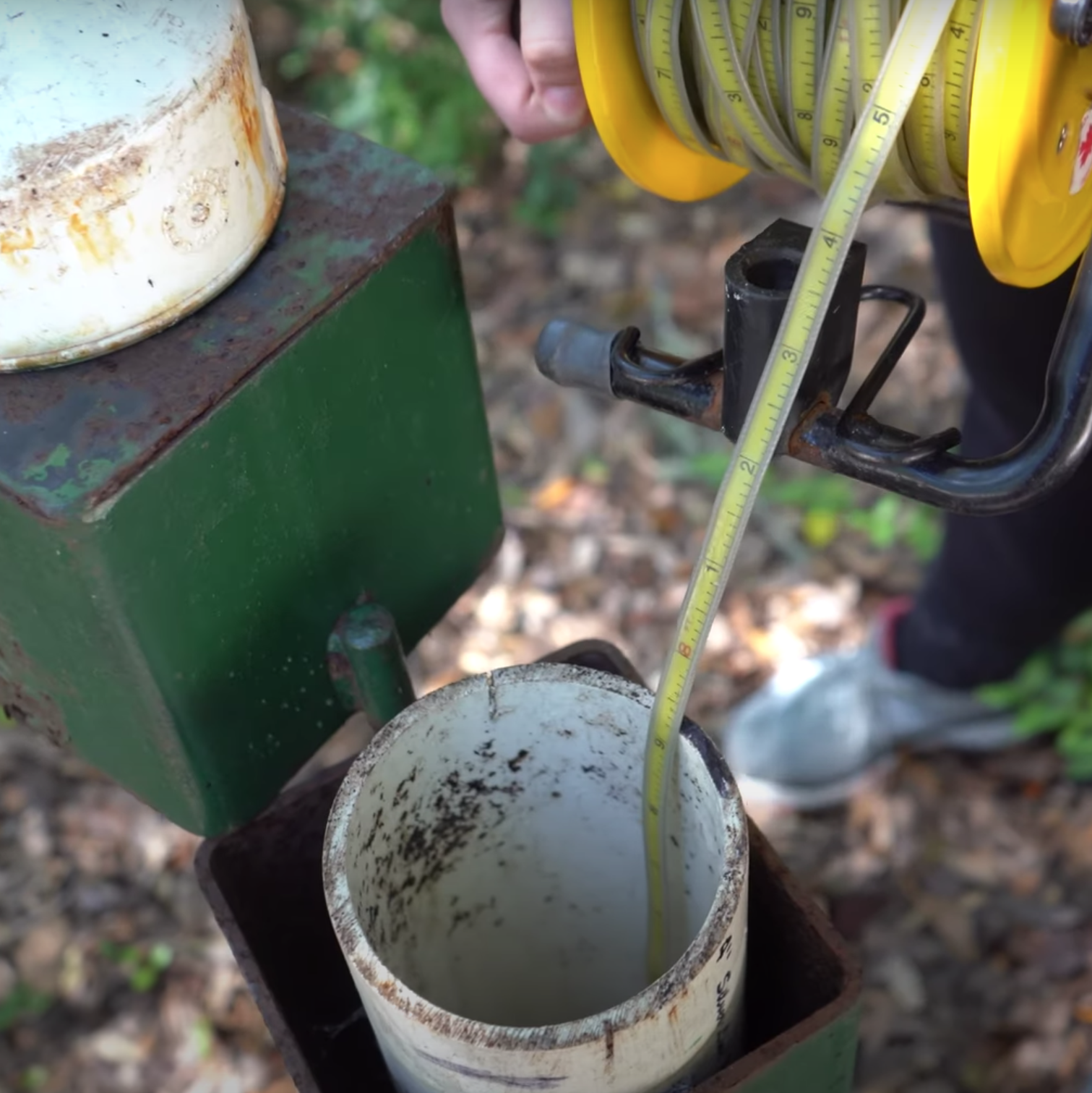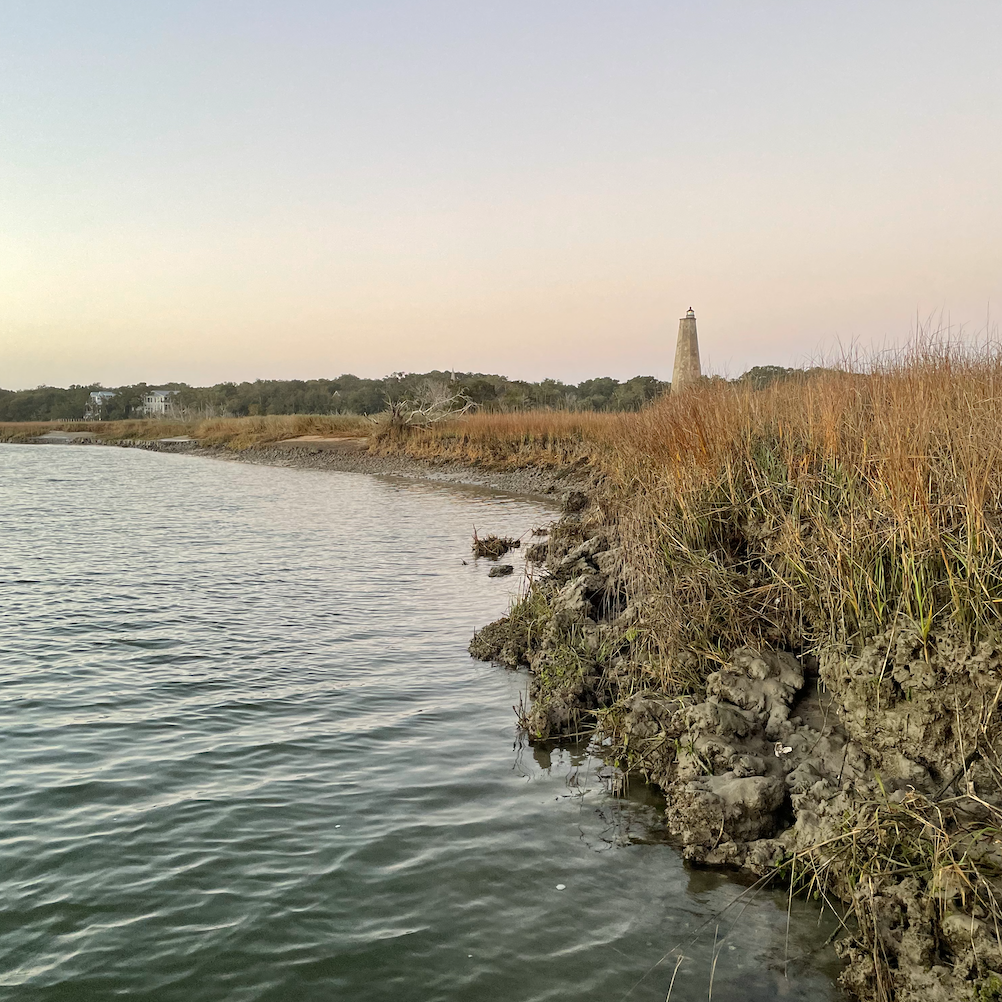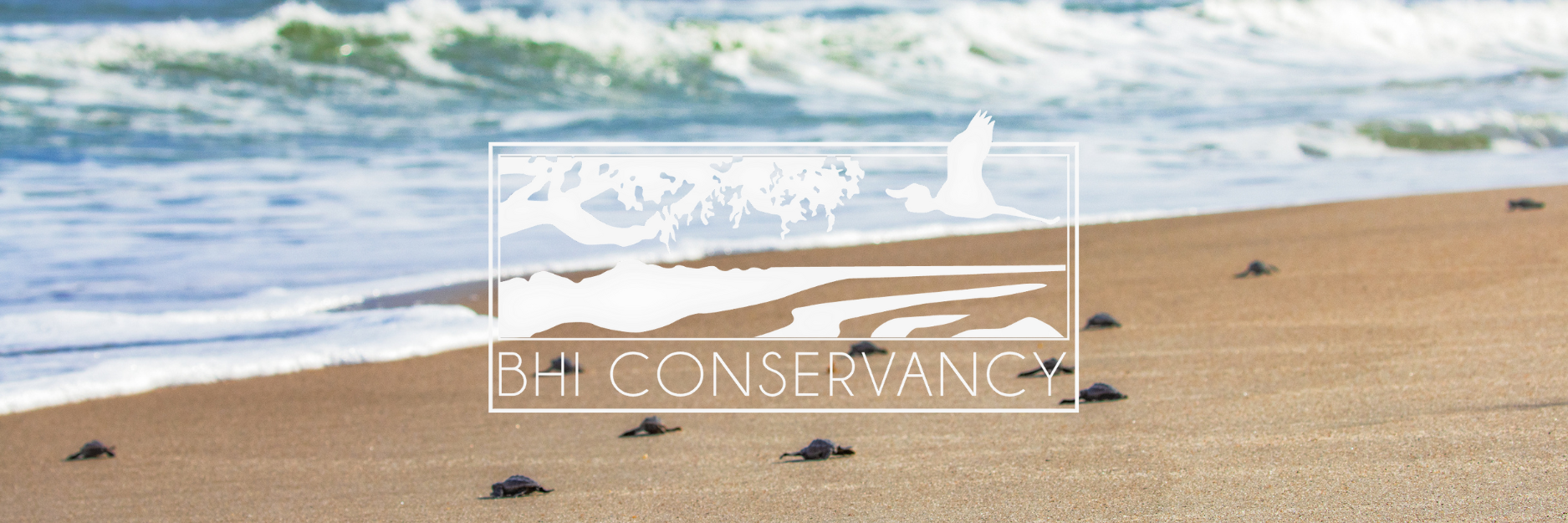Notes From the Field: Water Quality Conservation Work

by Elena Kelly, Conservation Intern

Bald Head Island is overflowing with water, from the beaches and brackish creeks to the aquifer underneath the island that provides our fresh drinking water. Our conservation team regularly tests the water quality and other metrics concerning the various bodies of water on the island. This work is a combination of field collection and lab analysis. Some samples are processed here in the Conservancy’s labs while others are sent off-island to larger labs on the mainland.
Why water quality monitoring is important
We monitor the quality of our waterways so that we can make well-informed and scientifically-sound decisions about the management and health of this resource. Water quality monitoring is especially important on BHI due to the delicate environmental conditions of the barrier island ecosystem and the heavy human use of the limited reserve of freshwater on the island. Much of BHIC’s water quality work is through our Environmental Services Contract with the Village of Bald Head Island or as a part of governmental programs.

What tools we use (what is a YSI?)
Every water quality-related project that BHIC conducts involves the use of a sonde called a YSI, which stands for Yellow Springs Instruments. The sonde contains a series of probes connected via a cord to a handheld monitor. The probes are lowered into a body of water where they measure temperature, dissolved oxygen percentage, conductivity, salinity, pH, and other parameters, then report that information to the handheld monitor.
Beach Water
Once a week from April – October, beach water samples are collected at East Beach, South Beach, and West Beach and sent off-island to be analyzed for the NC Department of Environmental Quality for Recreational Water Quality. The samples must make it to the mainland and be processed within six hours of being collected or else the enterococci bacteria in the bottle could multiply or die-off, skewing the data.
BHIC’s beachwater sampling is in accordance with the NC Recreational Water Quality Program. Our participation ensures the program can monitor a geographical area it would otherwise be hard-pressed to access. The bacterial data collected and analyzed through the program informs swim advisories and beach closures along the NC coast – view here.

Aquifers
The freshwater on BHI is sourced from the semi-confined aquifer underneath the island – it’s essentially a bubble of underground freshwater that the island rests on top of, surrounded entirely by saltwater. This is a finite water resource that humans and all other living things on the island depend on to meet their freshwater needs. BHI’s drinking water is sourced from this aquifer. Some of the current pressing issues facing BHI are related to the aquifer, including overproduction, contamination, and saltwater intrusion (where the freshwater is contaminated and overtaken by saltwater).
The BHIC conservation team accesses the aquifer from over forty ponds and wells located across the island to sample and monitor the aquifer. We have two main aquifer projects which were initiated in 2009. The first is to measure the depth-to-water. This helps us to keep track of the amount of freshwater left in the aquifer and monitor the rate of use. The second project is to conduct a water quality survey. We measure water depth, temperature, pH, conductivity, salinity, dissolved oxygen, and more, all of which help to alert us if overproduction, contamination, or saltwater intrusion is becoming a problem.
Creeks
Once a week, BHIC monitors tidal creek water quality at four sites along Bald Head Creek and Cape Creek. This long-term project collects and analyzes data on nutrients, chlorophyll, and fecal coliform levels in the creeks to better understand the inputs and dynamics of the salt marsh ecosystem that stretches across much of BHI. Metrics are taken with a YSI and water samples are collected to be taken back to the lab. BHIC also conducts 24-hour creek sampling several times a year to assess fluctuations in water quality over a 24-hour period.

The water samples are filtered in-house at the Conservancy to separate the dissolved nutrients from the chlorophyll. Dissolved nutrients such as ammonium, nitrate, and phosphate must be balanced in order for an aquatic ecosystem to be healthy. Frozen nutrient samples are sent back to the mainland to a lab at North Carolina State University. Here at the Conservancy, we analyze the chlorophyll from each filtered sample. Chlorophyll, a green pigment found in plants, indicates phytoplankton levels, but can quickly become harmful to the ecosystem if too plentiful (think algal blooms!).
Twice a month, extra samples are taken at each creek location to be tested for fecal coliforms. These samples are analyzed off-island at a commercial lab in Wilmington. Fecal coliforms originate from warm-blooded mammals. When present in high concentrations in the water, this indicates wastewater having entered the creek at some point recently. The long-term goal of this project is to provide enough data to create an algorithm that informs an accurate and precise monitoring platform that can predict fecal coliform levels.
Research
Our long-term creek water quality monitoring data has made our island an attractive location for research collaborations. For a number of years, we collaborated with Dr. Chris Osburn to collect colored dissolved organic matter (cDOM) samples. cDOM can be indicative of different sources of carbon to waterways. This led to our current collaboration with Dr. Natalie Nelson and others (including Osburn), funded by the US Coastal Research Program, using a high-powered YSI EXO2 sonde to measure water quality parameters continuously. We are testing the use of a tryptophan sensor, which in concert with the other sensors, may be able to predict fecal indicator bacteria instantaneously, leading to possible real-time alerts for water quality contamination.
All of BHIC’s water quality work keeps the island’s freshwater clean and at sustainable levels and keeps our salt water systems safe for both humans and the environment alike. You can help our mission by limiting your freshwater use, avoiding dumping into waterways, and supporting the Conservancy.
Location: P.O. Box 3109, 700 Federal Rd. Bald Head Island, North Carolina 28461 EIN#: 58-1574496
Phone: Office: (910)-457-0089
Email: info@bhic.org
Hours:
- Monday9AM - 5PM
- Tuesday9AM - 5PM
- Wednesday9AM - 5PM
- Thursday9AM - 5PM
- Friday9AM - 5PM
- Saturday9AM - 5PM
- Sunday9AM - 5PM


